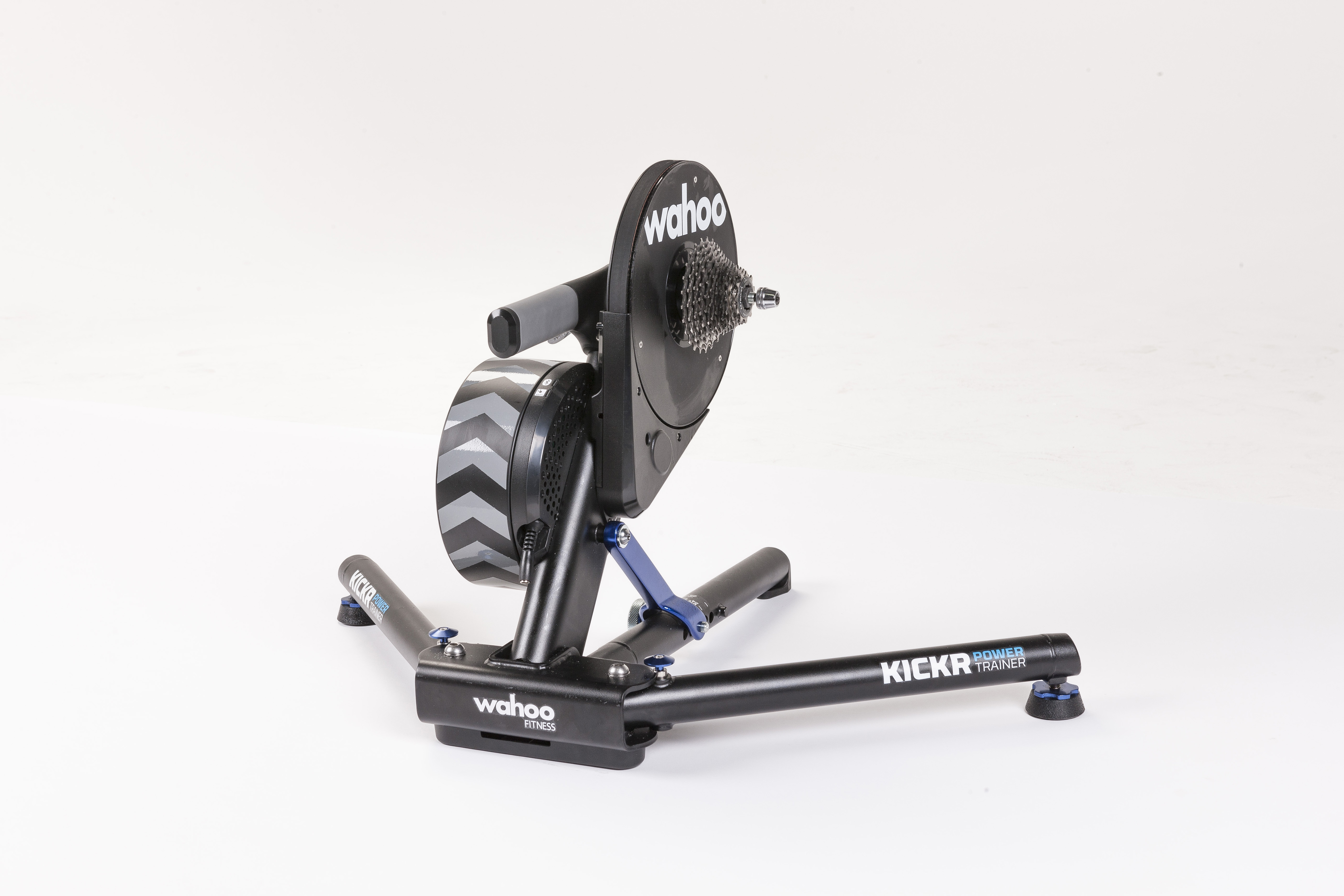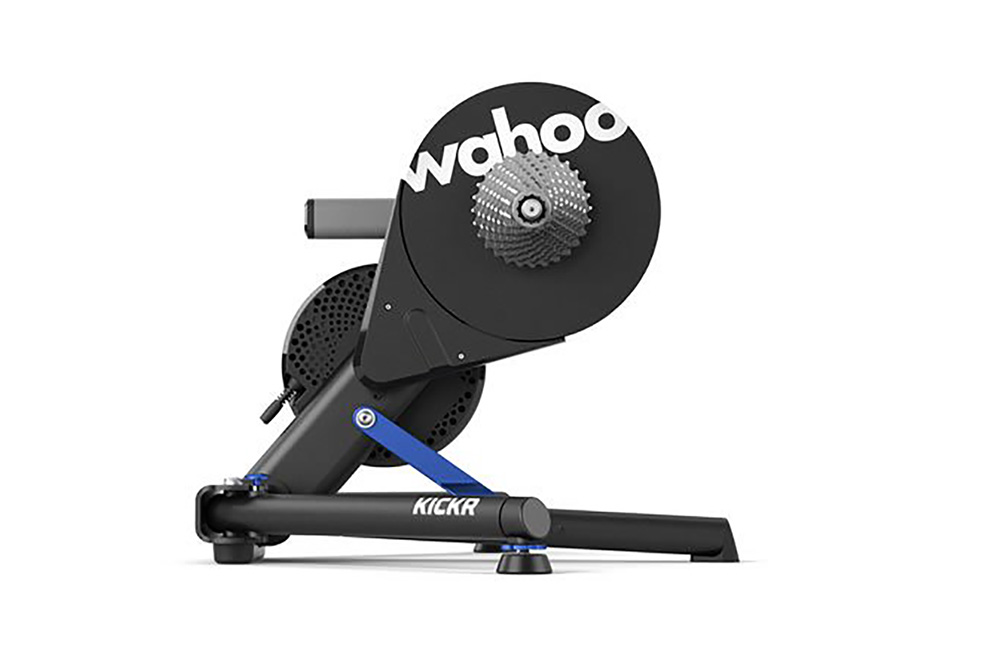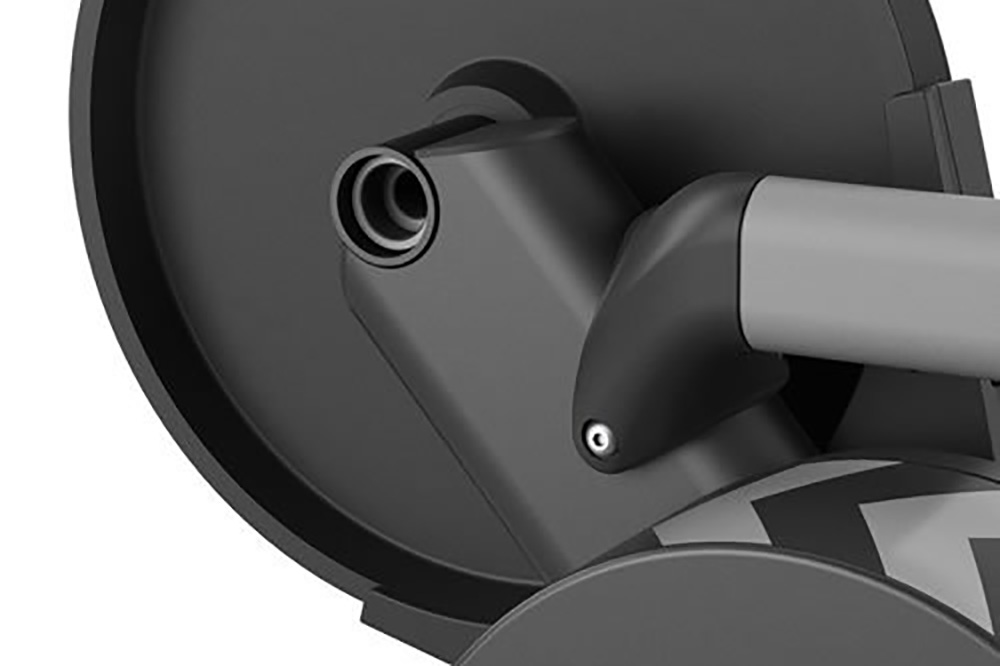Wahoo Kickr smart turbo trainer review
The latest version of the Wahoo Kickr has improved ride feel thanks to a larger flywheel but is it enough to improve overall?

Wahoo has improved the Kickr nicely and although it has a weight increase, thanks to good ergonomics and well placed weight it isn't that hard to move around. It also folds nicely to slot into a small space. It isn't totally silent and you still get a lot of gear noise but it is a good improvement over the previous model.
-
+
Feature-packed
-
+
Stable
-
+
Easy to set-up
-
+
Comes with Shimano 105 cassette
-
-
Needs a power socket
- -
You can trust Cycling Weekly.
The Wahoo Kickr was already a hit with us at Cycling Weekly but it did have some limitations in terms of outright performance and ride quality.
>>> Buy now at Evans Cycles for £999
For 2018 Wahoo has given the Kickr smart turbo a spruce-up, bringing a number of key upgrades to enhance the indoor riding experience. This all comes with no increase in price, which stays at £999.
>>> The best turbo trainers for autumn and winter 2018/2019
With these improvements (I'll come to those in a minute) comes one drawback – weight. With a larger flywheel than the previous model the overall weight increases to over 22kg. We need to see turbos getting lighter, not heavier! Thankfully the design, ergonomics and well positioned weight of the Wahoo Kickr means it remains one of the easiest turbos to move and store. Great when space is tight.

Compare this to the Elite Drivo II, which is lighter overall. The Elite is a larger unit which is harder to store (for those tight on space) and the weight isn't distributed as well as the Kickr. (In relation to where and how you hold the unit.)
The compact nature of the Kickr is down to the legs, which fold flush against the body of the unit. This design also means it doesn't need building when it comes out of the box. But there is a trade-off here. While the Wahoo Kickr is a stable platform, it isn't as stable during hard efforts as the Elite. There's a compromise between size, stability and storage. You decide which is more important.
The latest race content, interviews, features, reviews and expert buying guides, direct to your inbox!
The Kickr's 'ready out of the box' nature is complemented by the Shimano 105 cassette, a big improvement over the cassette previously provided.
>>> Buyer's guide to turbo trainers
Video - Buyer's guide to turbo trainers
Set-up and connection to other units is as easy via ANT+ or Bluetooth. You can calibrate it quickly and easily via Wahoo's app or a Garmin unit so once you've locked your rear dropouts in place and clicked a few buttons you're good to go. Compatibility with Zwift is also very good.
>>> Zwift vs Peloton: which is best for your at-home workouts?
Via the app you can adjust the erg setting, which is great for sessions where you want to sit at a certain wattage. The previous problem was that if you did stop pedalling the system would be nigh on impossible to get going again. It now adjusts the resistance so you can get back up to your required wattage without needing to do a standing start effort.
>>> Zwift vs Peloton: which is best for your at-home workouts?
In general it gives a very realistic feeling of road resistance. For example it's pretty damn hard to hold 30mph, and if you do, your wattage would be around what you'd expect to see out on the road.
These readings, however, didn't seem as stable as those of the Tacx Neo for example, and although I didn't experience any dropouts in wattage like I had on the previous version, numbers did seem a little more erratic than the Elite's and read a little higher than I'm used to seeing.

The larger flywheel definitely makes sprint efforts more manageable and with good connectivity I never experienced any dropouts as speed, wattage and resistance all stayed on point, even in Zwift training sessions with the erg mode on.
As with any turbo, noise needs to be factored in. Wahoo has improved this too and it claims the Kickr is almost silent when riding. My testing found over a course of a minute the decibel reading was 52db, around five less than the Elite Drivo II. Some of that comes from the drivetrain of course and a consideration with the supplied cassette is that if you have a worn and stretched chain it'll cause more friction and won't work as well with the new cassette.

The chances are you'll need to index your gears for the turbo set-up. I spent a while on the trimming setting of a Shimano Di2 to try solve clicking issues and it's a little more fiddly with mechanical gears.
Connection via Bluetooth or ANT+ is easy and the unit allows you to do both at the same time. External apps like Zwift work seamlessly, and while I’m yet to explore many more to see how it compares, being open source means the Kickr can connect to pretty much anything.
The updated Wahoo Kickr remains one of the best on the market in terms of road feel and has managed to sharpen up that feel further still with the latest update. It's done this simply by increasing its flywheel size to 7.25kg.
Other updates include a better overall wattage output which increases to 2,200w (this feels like a bit of a needless arms race to mortals like me, but track sprinters might think differently), whilst mimicked gradients stop at 20 per cent, slightly down on its rivals.
Overall it is a great piece of kit and very practical too. When compared to the other smart turbos on the market I feel Wahoo gets more right than wrong.
Symon Lewis joined Cycling Weekly as an Editorial Assistant in 2010, he went on to become a Tech Writer in 2014 before being promoted to Tech Editor in 2015 before taking on a role managing Video and Tech in 2019. Lewis discovered cycling via Herne Hill Velodrome, where he was renowned for his prolific performances, and spent two years as a coach at the South London velodrome.